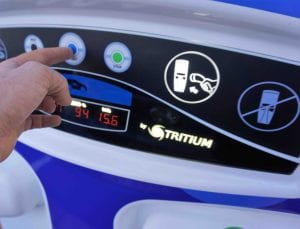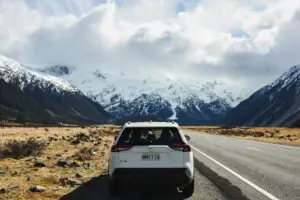 Much of the public and media commentators fail to pay full attention to the transportation disruption the world is about to go through, many consider it’s going to happen but believe the change will be very slow, a 30 to 50 year process is the general opinion.
Much of the public and media commentators fail to pay full attention to the transportation disruption the world is about to go through, many consider it’s going to happen but believe the change will be very slow, a 30 to 50 year process is the general opinion.
Well here’s my prediction: by 2027 there will be no sales of new 100 per cent internal combustion engine vehicles (ICE) in Australia.
Car dealerships, if that concept still exists, will only stock battery electric vehicles (BEV) or Hybrid vehicles, at least 80 per cent of those vehicles will be the less complicated BEV, the remaining sales Hybrid, anyone looking to buy a new internal combustion engine driving a mechanical drive-train will be in for a shock.
Most people reading this would very much doubt the above is even close to reality in Australia as there is a section of today’s population that will always want an ICE drive-train. Yes, that’s correct, but there’s also a series of factors that will combine to fast track the demise of new ICE vehicle sales.
I will get to the biggest factor last but first it’s important to look at the timeline of electric vehicle disruption:
- 2018-Most of the world’s car makers are preparing for an Electric vehicle future, due to bottlenecks in battery supply chains and other production constraints the initial build volumes will be low keeping prices high.
- Sometime before 2022 the average Electric vehicles total cost of ownership will be less than an equivalent ICE vehicle, this includes the lower life time servicing, repair and re-fuelling costs.
- By 2025 the initial purchase price of an EV will be less than the purchase price of the equivalent ICE vehicle. This is due to a number of reasons including; far higher production volumes, far lower battery costs and the clear fact that an EV with less than 20 moving parts is far less complicated to build than an internal combustion engine drive-train with over 2000 moving parts.
- By 2025 the excuses for not owning an EV will no longer exist, driving range per charge, recharging speed and availability of charging points will be perfectly acceptable for most drivers, for those that aren’t convinced that a BEV is suitable a Hybrid vehicle will cover their needs. For those who still need a brand new complete internal combustion engine drive-train vehicle they have 2 years before the price difference becomes too much to justify.
So what’s the biggest factor in the demise of ICE new car sales? Put simply the country has too many now.
Australian’s have had a long love affair with their cars, getting a driver’s licence and car was and in many cases still is a big deal to many teenagers, this carried on through their 20s right through to retirement.
Cars offered freedom, a great way to socialise, and if you weren’t that sharp at school, no good at sport, or would never win a beauty contest, that didn’t matter – you could always have a cool car.
That’s all about to change. Cars are not so important to many teenagers anymore; it’s a tool to get from A to B, they have a smart phone and that’s more exciting, plus they can call a Uber to get from A to B.
Then there’s the adult population that already have a licence and live in a two or three car family. They already had an inkling that cars were money pits, but it’s starting to hit home now.
The most recent report from the AAA states that transport costs are almost $18,000 per household; that extra car taking up space in the carport is starting to look dispensable.
Paying for a second or third motor vehicle that rarely gets used is a waste when public transport, car sharing or an electric pushbike could reduce the transport costs significantly.
Some households have already taken this course of action, the money is better spent on home loan repayments or holidays, expect plenty more to follow suit as time passes.
On top of this there’s a growing number of reasons for the public to give up driving, such as speed cameras, toll roads, road rage and traffic jams. These inhibitors to a pleasant driving experience will not go away.
For many people it’s a far better experience to be a passenger and catch up with social media, expect car ownership to reduce steadily over the next decade, public transport and electric vehicle ride sharing will increase in popularity.
All those cars and SUVs that were purchased new between now and 2025 will still be useful, but they will be common and cheap on the second hand market. Due to the higher running costs compared to an electric vehicle, it may be viable to purchase a very cheap second hand ICE but certainly not viable to purchase a new one.
The only ICE vehicles that hold any value will be rare classics from the days when Australians loved their cars.
Robert Dean is an owner of both electric and ICE vehicles










